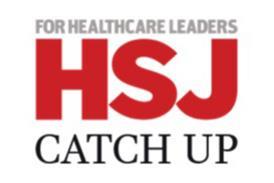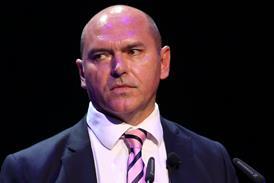London’s acute hospitals face a drop of up to 72 per cent in their workload and a 42 per cent cut in their annual income by 2016-17, a report disseminated by the capital’s strategic health authority has warned.
As the NHS in England prepares to make efficiency savings of £20bn by 2014, NHS London has told organisations in the capital the recession means hospitals must prepare for even greater changes to services than they had planned.
The report, dated June 2009, features analysis by McKinsey. It says plans to shift more care out of hospitals and into GP practices and polyclinics will lead to hospitals needing just two thirds of the beds they would need under current levels of care.
Real change will be rapidly needed as the current system will no longer be affordable soon. Seizing the changing external economic environment as a catalyst and driver for radical shifts in how services are provided and delivered will be critical
But it warns that if acute trusts do not rapidly start to rationalise their fixed overheads and estates they will be left with annual unfunded costs of up to £3.4bn - equivalent to more than 60 per cent of their projected income of £5.5bn a year.
The report spells out the size of the financial threat to the capital’s hospitals by the Healthcare for London plan, which is already under way and involves increasing the amount of care delivered through “polysystems” of joined up GP practices and health centres, with acute and trauma care centralised at selected acute hospitals.
The proposals have been widely consulted on and the report says they are necessary to make the increasing demand on London’s healthcare affordable, as well as to improve quality.
But the report warns that the economic downturn has meant funding projections should be revised, with the result that hospitals must prepare for even greater changes.
It says the original projection for funding increases (1.4 per cent to 5.5 per cent a year) is now optimistic. Instead it predicts funding will grow at a “considerably lower rate”.
It gives three potential scenarios: a worst case where funding is cut by 2.3 per cent in real terms a year, a best case where it grows by 0.75 per cent and a base case where it is frozen in real terms until 2016-17.
The report was disseminated by NHS London with the disclaimer: “The productivity improvement and cost reduction cases described in this document are examples for each primary care trust, trust or other health body to explore according to their local context and situation.
“In no case does this document reflect a set of imposed directions/actions which the strategic health authority is ‘telling you to take’.”
The report says: “Real change will be rapidly needed as the current system will no longer be affordable soon. Seizing the changing external economic environment as a catalyst and driver for radical shifts in how services are provided and delivered will be critical.”
It says that after cost inflation, forecast reductions in the rate of funding growth mean that PCTs in London will be left with a funding gap of up to £5.1bn. It says even if the tariff for acute care is cut 3-4 per cent a year, the funding gap will still amount to around £2bn.
Like the national McKinsey report, the London analysis suggests further ways to reduce costs in addition to cuts to the tariff. These include decommissioning “low value added interventions” such as grommets, some joint replacements and some outpatient follow-ups and eliminating “unnecessary and costly service overlaps”, which it lists as those between out of hours care, extended hours, urgent care and accident and emergency.
It is those changes, if pursued “aggressively”, which will lead to a 72 per cent reduction in patient volumes in the capital’s hospitals.
It says some of the resulting 42 per cent cut in hospital income will be offset by lower hospital costs as they will be treating fewer patients, but it says without “significant productivity improvements” and the “elimination of fixed costs” and overheads, London hospitals could face a funding gap of between £2.9bn and £3.4bn.
In a statement NHS London said the 72 per cent figure is based on unweighted activity and is not representative of the resources and income acute trusts would receive for this activity. The estimated reduction in inpatient activity, for which acute trusts receive most of their income, in this scenario is 10 per cent by 2016-17.
A spokesperson for the SHA said: “These models provide us with scenarios rather than forecasts and will be used to ensure that we are using our resources as efficiently as possible.”
Managers’ reactions
Stephen Eames, County Durham and Darlington Foundation Trust chief executive
We absolutely need to focus on areas where we need to minimise waste and cost.
However, it has to be remembered we are already very much engaged in many of these areas [proposed by McKinsey] in our financial planning.
The key to delivering these sorts of outputs has to be a whole system approach.
Acute trusts have been focused on delivering efficiency savings which are internal and will continue.
[But] in order to save the sorts of sums that are being talked about you have to get into some fairly radical change.
Therefore I think we are moving to services being organised differently, possibly in larger organisations.
It cries out for services being provided in different organisations, acutes and primary care trusts, to be brought together under single leadership and management clinically and managerially.
Trafford Healthcare Trust chief executive Ron Calvert. [The trust plans to reduce capacity at Trafford General Hospital over five years, with an integrated care organisation involving Trafford Primary Care Trust provider services, GPs and University of South Manchester Foundation Trust.]
I think the key is to plan changes over a three to five year period.
We are greatly reducing the cost base without redundancies by taking advantage of people retiring and leaving and some retraining.
The transformation will be aided by creating the integrated care organisation.
We will collect the income between us and redistribute it according to costs, and shift the cost base over time from the acute setting.
If it works there will potentially be ways forward for the whole NHS, which boils down to closer working between GPs and hospitals.
The biggest savings would be made in the NHS by preventing chronic disease sufferers from needing hospital treatment, part of the aim of the scheme.
London in numbers
- Growth in activity (acute and non acute) per year up to 2016: 4 per cent
- Base case PCT funding growth per year up to 2016: 0 per cent real terms
- Base case PCT overspend in 2016-17: £4.4bn (33 per cent of income)
- Real terms cut in annual acute income in 2016-17: 42 per cent
- Threatened hospital deficit in 2016-17 (base case): £3.2bn (58 per cent of income)
McKinsey report: politicians accused of not facing reality
- 1
- 2
- 3
 Currently reading
Currently readingLondon acutes could see workload fall by up to 72pc
- 4
- 5
- 6
- 7
- 8
- 9
- 10
- 11




































3 Readers' comments